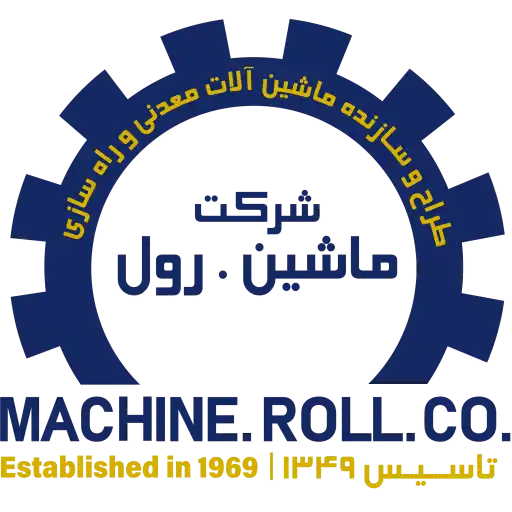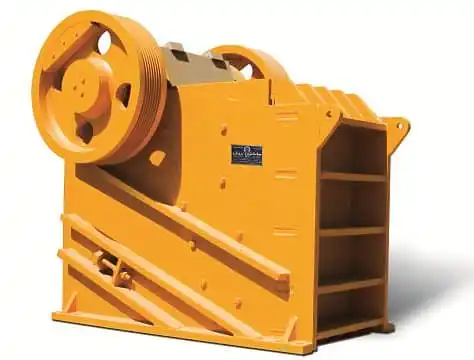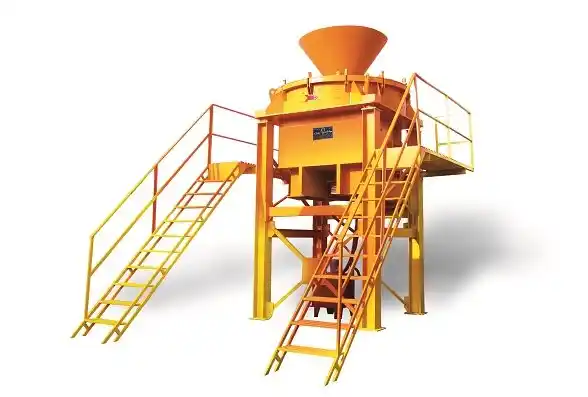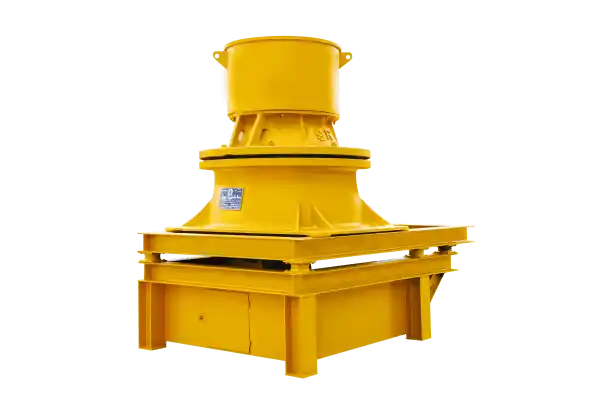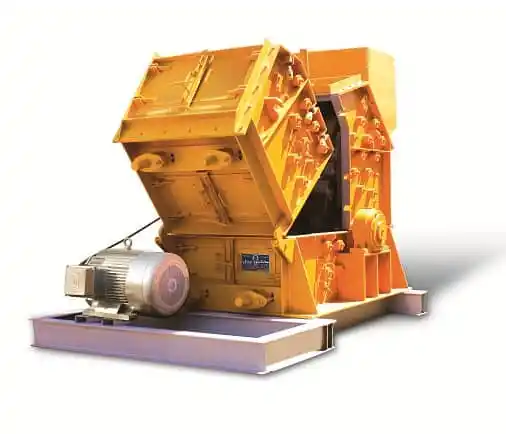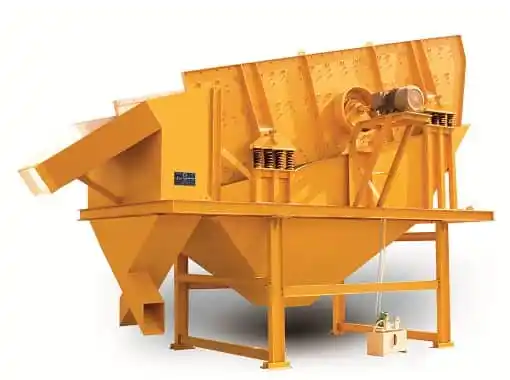What is a feeder device?
The feeder is one of the most widely used industrial devices used in mining crushing lines or other factories producing various products.
The feeder is known as one of the most vital equipment used in the production line, which is responsible for feeding crushing machines such as jaw crushers, hydrocone crushers and VSI crushers (rock and rock). In all industries, we use industrial feeders to continuously and uniformly feed production line devices. Therefore, failure to place this device in production lines or failure to pay attention to the proper functioning of the feeder is equivalent to stopping the production line, reducing proper efficiency, and also reducing production. Feeders have various types and applications. Therefore, the selection of feeders is made according to the type of application, structure and transmission mechanism in different industries.
Feeders come in various types and, depending on their specifications and applications, are used in various industries such as pharmaceuticals, agriculture, and mining. Since the continuous and regular operation of equipment and machinery in sand and gravel production plants requires continuous receipt of minerals, using the right feeder for the type of machine plays a vital role in obtaining proper efficiency from the production line.
Among the most important sand and sand mining equipment, the performance of which is completely dependent on the existence of an industrial feeder, are crushers, mixers, mills, and conveyor belts. As one of the main elements of the sand and sand production line, which is responsible for transferring raw materials to various equipment, the feeder has other significant advantages in addition to increasing work efficiency and reducing the need for manpower.
Some feeders are able to prevent unauthorized objects from entering the machinery due to their separation parts. Therefore, in addition to feeding the machines, the industrial feeder is also able to protect them, thus contributing to increasing the life of the machines and reducing repair costs. Most feeders are able to easily adapt to various types of raw materials by adjusting important factors such as the speed of movement of the materials, the distance between the levers and the angle of the feeder plate.
Feeders use various mechanisms to transfer raw materials to equipment, the most important of which are lever, chain, impeller, vibrating system and electromagnetic system. The selection of the appropriate mechanism for transporting raw materials should be made according to the field of activity and the machinery used in it.
Feeder technical specifications
In general, the technical specifications of the feeder are divided into different categories of feeder parts, capacity, and types of feeder machine models. We will explain the details of the issues discussed below.
Feeder parts
This device consists of the following main parts:
Types of feeders
Machine Roll Company offers a variety of feeders in different sizes, capacities, and models. Grizzly, single-axis, dual-axis, vibrating, reciprocating and chain:
Grizzly Feeder
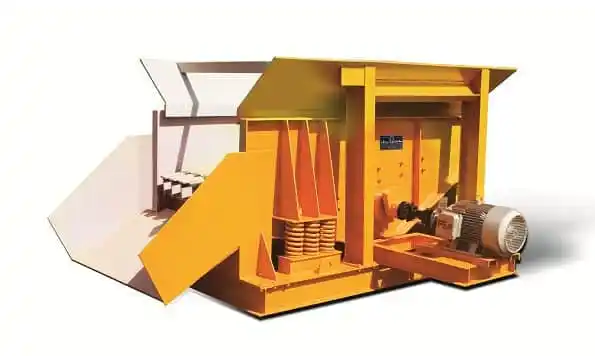
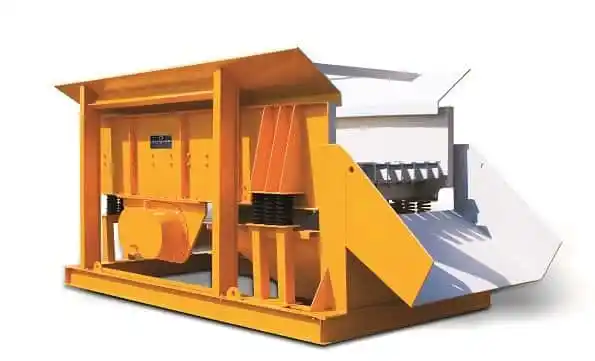
Grizzly Feeder is an important equipment in the mining and quarrying industries, used to feed raw materials to crushing machines such as crushers and mills. This feeder is specifically designed for uniform feeding of large and coarse materials and is commonly used in mines and stone processing.
A grizzly feeder usually has a vibrating screen that guides the material evenly and in the right amount to the next equipment. This grizzly screen has specific slots that separate material larger than a certain size (e.g. 100 mm) from smaller material, and the larger material is transported to secondary crushers.
Due to its use in harsh environments and difficult working conditions, the grizzly feeder is usually made of wear-resistant materials. This device is usually capable of feeding a high volume of material and is therefore very suitable for industries with high production capacity.
This type of feeder is one of the most widely used feeders in various fields of work, often used in mines. The reason for naming this type of industrial feeder is because of the presence of steel grids and combs at the end of the device, which act like a grizzly screen. Since this type of feeder is capable of carrying heavy mineral pieces and separating fine grains from coarse ones, one of its most important uses is in primary crushers.
The way the grizzly feeder works is that first the materials are poured down from a silo installed at the top of the machine onto the grizzly screens. Then the small pieces of rock are separated from the large pieces by the vibrating motion of the feeder, and finally the large pieces of rock are sent to the crusher. In this way, this device can prevent dust from entering the crusher and reduce problems and damage to the crusher.
This type of feeder is manufactured by Machine Roll Company in two different models: single-axis and dual-axis. The dual-axis model of this type of feeder can provide better performance and uniform feeding speed due to the number of axes and the unique vibration and throw adjustment method that the device creates. If a flat plate is installed instead of a comb in this feeder, it can also be used as a simple feeder.
Overall, the grizzly feeder serves as a key component in rock and mineral processing lines and plays an important role in reducing costs and improving the quality of the production process.
The most important uses of the grizzly feeder
- Used in stone mines to feed large rocks and minerals to crushing machines.
- Used in recycling industries to process recycled materials to separate larger materials
- Used in cement and steel industries to feed raw materials to furnaces and other production equipment.
Grizzly feeder models and capacities
It is possible to design and manufacture Grizzly feeders in the dimensions and capacities of the proposed models, according to the needs of our valued customers. If you wish to inquire about the price, consultation, and purchase of Grizzly feeders, please contact the company’s experts from the contact us section.
- Simple and single-axis grizzly feeder 2.5 meters
- Simple and dual-axis grizzly feeder 3 meters
- Simple and dual-axis grizzly feeder 3.5 meters
- Simple and dual-axis grizzly feeder 4 meters
Vibrating feeder
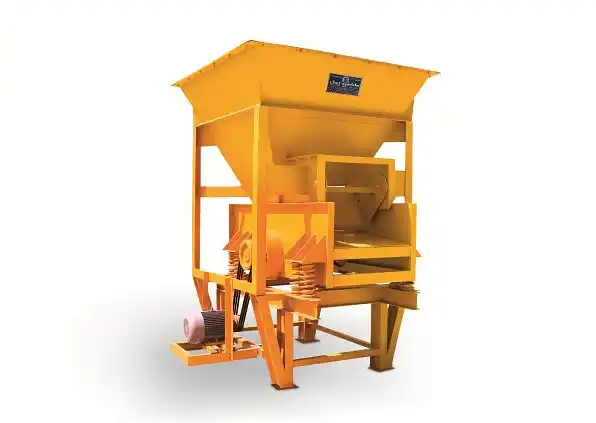
A vibrating feeder is a type of feeder (feeding equipment) used to transport and feed materials to process devices such as crushers, mills, furnaces, and other equipment. This feeder uses vibration force to transport materials uniformly and in a given volume to other devices.
A vibrating feeder is mainly composed of a vibrating plate (vibrating platform) that uses electric motors or other vibrating mechanisms to transmit vibration force to the plate. These vibrations cause the materials to move on the plate and be transported to subsequent devices.
One of the important features of a vibrating feeder is that the intensity of the vibrations and therefore the speed of the material movement can be adjusted. This feature allows for precise control of the material flow. The vibrating feeder effectively transfers the material to the next equipment in a uniform and non-stop manner, which improves productivity and reduces material waste.
These types of feeders are usually made of wear-resistant and corrosion-resistant materials so that they can last in harsh and long-term working conditions, and they are also capable of conveying a variety of materials with different characteristics, including dry, powdered, granular, granular, and even sticky materials.
A vibrating feeder is a device that is usually placed as a feeder in the initial lines of stone crushing and directs the material towards the receiving feeding device with vibrating movements. The vibrating feeder is capable of continuous and long-term operation in harsh conditions.
The vibrating feeder, like the grizzly feeder, uses a vibration mechanism to transmit power to the device. Unlike other feeders, this type of feeder is fed through a silo that is installed at the top of the device. Unlike grizzly feeders, this feeder is made of a flat plate that the incoming load is poured onto after passing through the silo and moves forward at a uniform speed.
The way the vibrating feeder works is that an electric motor is used to provide power and the crankshaft system is responsible for vibrating the tray. Hence, the force generated by the electric motor is transferred to the shaft of the device and causes it to rotate. On both sides of this shaft, anchors are installed that create a vibrating motion following the rotation of the shaft and cause the feeder plate to vibrate.
As the device vibrates, the materials that enter the feeder from the input hopper are poured onto flat plates that are inclined and are transported to the end of the device and out of it with the help of vibrational movement and also gravitational force. The vibrating feeder is placed on springs that control the vibration and create a uniform oscillation amplitude. As a result, the materials also exit the device uniformly and enter the receiving device.
Vibrating feeders with adjustable speed and vibration strength provide greater control over material transfer. These types of feeders have a robust and durable structure that withstands harsh environmental conditions such as heat, cold, or dust, and use appropriate vibrations to transfer materials with minimal energy loss and maximum efficiency.
Vibrating feeders are essential tools in various industries, especially in production processes and transferring materials to other equipment. Features such as precise adjustment of speed and material flow, consistent performance, and the ability to work in harsh conditions have made these devices an effective tool in production lines.
The most important applications of vibrating feeders
- Vibrating feeders are used to transport mineral materials (such as crushed stone, sand, gravel, and powdered materials) to crushers, mills, or processing plants.
- For conveying various materials such as powder, grains, granules and other non-liquid materials in the production or packaging process
- For conveying powdered or granular materials in pharmaceutical production lines
- To feed raw materials to devices such as mixers or other devices
- For transporting raw materials and clinker to kilns or other process equipment
Advantages of Vibrating Feeder
- Ability to precisely adjust the amount of materials entering process devices
- The vibrating feeder automatically conveys materials and requires less human intervention.
- Due to the vibrating action, the material flow is continuous and non-stop.
- These feeders are resistant to harsh conditions, such as high temperatures, humidity or dusty environments.
- These devices are usually energy efficient and perform optimally in long-term processes.
Vibrating feeder models and capacities
It is possible to design and manufacture vibrating feeders in the dimensions and capacities of the proposed models, according to the needs of our esteemed customers. If you wish to inquire about the price, consultation, and purchase of a vibrating feeder, please contact the company’s experts from the contact us section.
- Vibrating feeder 70
- Vibrating feeder 90
- Vibrating feeder 100
Reciprocating feeder
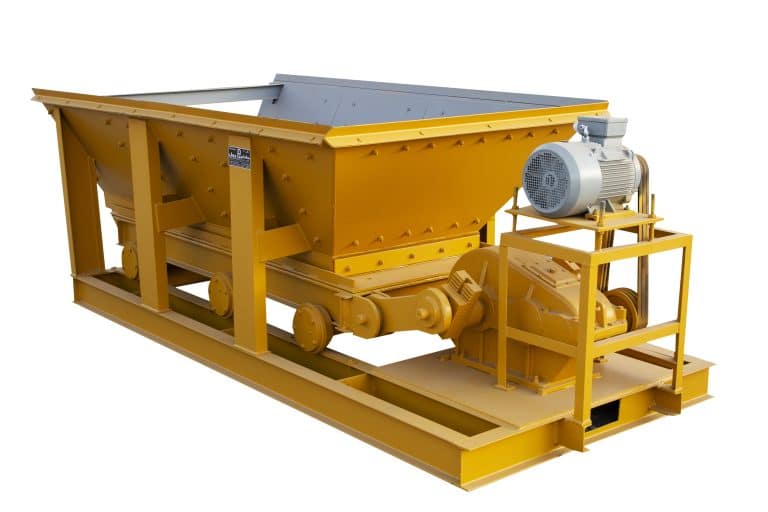
The reciprocating feeder is one of the important equipment in mineral conveying systems in mines. These feeders are specifically designed to transport minerals from one point to another in the process of mining, crushing and processing minerals.
Reciprocating feeders typically consist of a rod system (bin or conveyor) through which minerals are uniformly conveyed. These feeders may be of the vibratory or conveying type, and their primary purpose is to control the rate and speed of material transfer to downstream equipment such as crushers, mills, and other processing devices.
One of the most important features of a rod feeder is its ability to transport materials uniformly and with high accuracy. This feature is especially important in high-capacity mines or in sensitive processes. A reciprocating feeder usually has the ability to adjust the speed of material transport, which allows the operator to control the amount of material transported and optimize the extraction or crushing process.
A reciprocating feeder must be able to handle heavy loads and materials of various sizes, especially in mines that have hard or large materials. These feeders must perform well in harsh conditions and challenging environments such as dust, humidity, and variable temperatures. Reciprocating feeders must be designed to operate in the harsh environments of mines. For this reason, this equipment is usually made of materials that are resistant to wear, corrosion, and mechanical damage.
This type of feeder is used to convey coarse, moist, and sticky materials. This system is particularly effective in wet or sticky conditions, and maintains its optimal performance even in rainy seasons or areas with high humidity.
One of the most notable features of this machine is the ability to adjust the output at three different locations, allowing operators to vary the feed rate from zero to maximum capacity based on the plant’s production needs. This flexibility in output adjustment makes the reciprocating feeder a popular choice for high-, medium-, and even small-scale factories. In large factories, this machine is usually placed in the middle of the production line to ensure a continuous and regular flow of material to subsequent equipment, while in smaller factories, it is used at the beginning of the production line to provide optimal feeding.
Another advantage of this device is its ability to be customized based on the capacity required by the factory. Depending on the specific needs of each production unit, the reciprocating feeder can be manufactured in different sizes and capacities to ensure higher productivity.
The working principle of the reciprocating feeder is that the primary mineral pieces flow from the silo (warehouse) to the feeder tray, and as the tray is moved by the rod, the rock pieces flow to the crusher. Depending on the type of application, this device can be designed in two ways: one with a hopper and the other without a hopper. In cases where there is a need for temporary storage of materials, a hopper is installed, but in other applications where direct and continuous feeding of materials is required, the hopper is removed.
These types of feeders are produced and used for small stones with high efficiency and larger ones for smaller and medium stones. The capacity of these feeders is determined by the width, crank, and range of travel. The travel rate of these feeders can be adjusted depending on the movement requirement for the stones to pass.
The reciprocating mechanism in this type of feeder is transmitted to the device by an electric motor and gearbox. New materials are continuously added to fill the space behind the feeder to prevent the materials from returning when the feeder moves backward. The maintenance cost of feeders, especially reciprocating feeders, is very low and they are also highly efficient. Another advantage of these feeders is the ability to adjust and control the material input flow rate.
Overall, the mining reciprocating feeder is an essential tool in mineral transportation and processing processes that helps optimize efficiency and reduce mine operating costs.
The most important applications of the reciprocating feeder
- In the process of mining and crushing minerals, the reciprocating feeder can uniformly transport the crushed materials to mills, furnaces or other processing equipment.
- The reciprocating feeder is used to feed other mineral processing equipment, such as separation, screening or flotation devices.
- These feeders can transfer materials directly to loading systems to transport the materials to other parts of the mine or to the relevant warehouses.
- This type of feeder is used in the sponge iron production process to uniformly feed materials to reduction furnaces and iron production lines.
- It is used in the glass industry to move raw materials such as sand in the glass production process.
Advantages of the reciprocating feeder
- Ability to precisely control the amount and speed of material transfer to ensure an optimal process
- Ability to withstand harsh conditions and difficult mining environments
- By using these feeders, the possibility of material waste is minimized.
- Due to their proper design, these feeders can operate optimally in terms of energy consumption.
Reciprocating feeder models and capacities
Designing and manufacturing of reciprocating feeders in the dimensions and capacities of the proposed models is possible according to the needs of our esteemed customers. If you wish to inquire about the price, consultation, and purchase of reciprocating feeders, please contact the company’s experts through the contact us section.
- mountain reciprocating feeder 3 meters
- River rod feeder 70
- River rod feeder 90
- River rod feeder 100
Feeder price
Considering the important factors discussed in the sections described, such as dimensions, capacity, weight, etc., one of the most important factors in choosing a feeder is the price factor. As we have already mentioned, ordering a device with larger dimensions will also increase the price. It should be noted that due to fluctuations in the price of the dollar and steel products, which are the basis of the raw materials for making feeders, it is not possible to determine a fixed and specific price for this device. For information on pricing, advice, and feeder orders, please contact the company’s experts through our contact us section.
